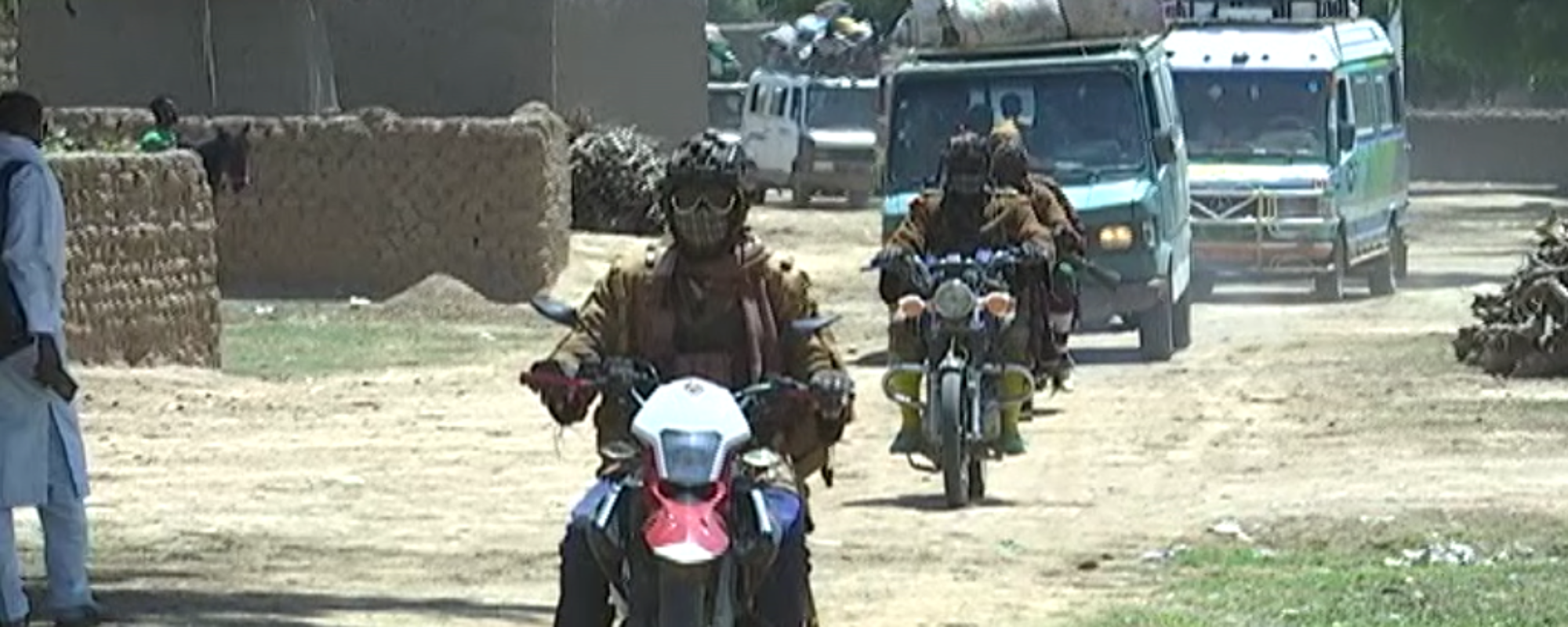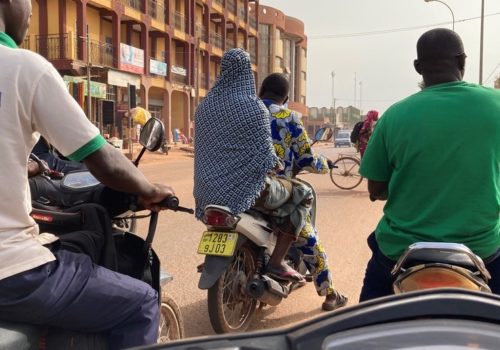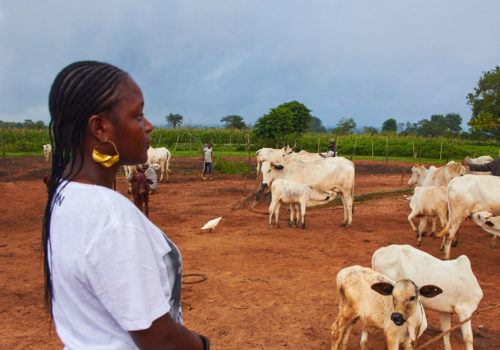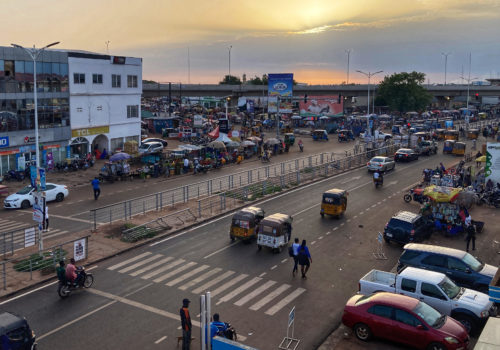BAMAKO, Mali — It was July 2020 and in villages across the rural commune of Femaye in central Mali, thousands of civilians were returning home. Mostly women and children, they had fled two years earlier after a local militia known as the Donso massacred three dozen people, all from the Peul minority ethnic group, whom they had accused of supporting jihadist insurgents. Now the same Donso, wearing their characteristic coarse brown robes draped in mystical talismans, and carrying hunting rifles, were escorting the returnees back to their homes.
The return to Femaye—the result of months of discussions between Donso, Peul civilian leaders, local government and civil society—was followed by a year of tense peace between communities, and a lull in jihadist insurgent attacks. However, the militants, who were not a part of the mediation, laid siege to villages in Femaye in early 2021. Their blockade was lifted in June after the Donso agreed to the insurgents’ terms, which included relinquishing their weapons and agreeing not to work with the Malian military. Today, the commune’s residents are again able to farm, fish and move around during another fragile peace.
Femaye is just one of many rural communes in central Mali that have survived a nearly decade-long civil war by negotiating multiple precarious cease fires with various armed groups. While these local truces lead to less violence and a temporary return to some semblance of normalcy, without the participation of the main actors in the conflict, the arrangements will almost certainly be short lived. Ultimately, they must be paired with a larger negotiated settlement if there is to be a conclusion to Mali’s civil war.
The ongoing war made it impossible for me to travel to Femaye. The following account is based on conversations with members of the Association for the Integral Development of Femaye (ADIF), a Bamako-based community development organization led by the commune’s elites, as well as phone calls with farmers currently in Femaye along with experts and observers of central Mali. I have changed the names of those directly connected to Femaye for their safety, as requested.
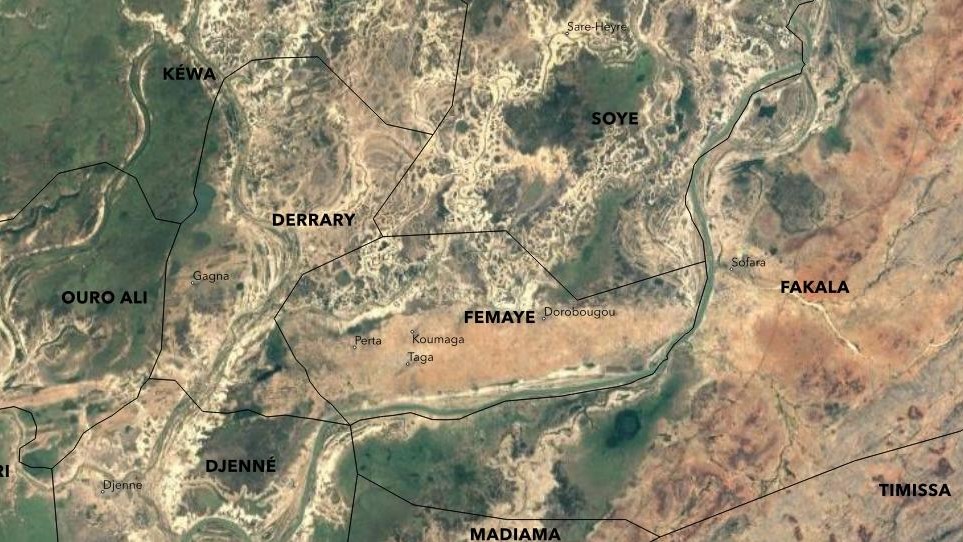
I’ve lost count of the number of times analysts, participants and survivors from the war have brought up the central role of land to understanding the conflict. Femaye, a cluster of 21 villages on a seasonal island on the edge of the Niger Delta, is no different. Every year at the beginning of the rainy season, the Niger River floods into a series of smaller canals watering an inland delta the size of Connecticut and providing fertile alluvial deposits, plentiful fish hatcheries and pasture that lasts deep into the dry season.
In the southern part of the Niger Delta in the cercle de Djenne[1], farming is considered the domain of people from the Bambara ethnic group (who predominate in Femaye and across Mali) and the Rimaybé, formerly enslaved people in Peul society. Keeping livestock and hosting nomadic herders during their annual migration to the lush inner delta is associated with Peul, who make up one third of Femaye’s population. Fishing is often done by Bozo or other smaller ethno-linguistic groups. Those communities have a long history of sharing their valuable ecological space and mediating inevitable disputes without resorting to violence.
But that was before Mali’s civil war. In 2012, secessionist rebels seized towns in Mali’s expansive north. Unable to hold off the attacks, the national military imploded. When one of the rebel groups struck into central Mali a year later, the French government intervened with a military operation that re-captured northern cities, scattering an alphabet soup of militant groups into rural areas. In the north and many areas in the center, the police, teachers, judges—essentially the state—fled and bandits and militant groups flourished.
As politicians haggled in the capital Bamako, a popular preacher-turned-militant Hamadoun Koufa—who had made contacts with Al Qaeda’s Saharan branch while fighting alongside northern rebels—was attracting recruits to his own jihadist group, Katiba Macina, in central Mali. Some joined because they wanted weapons to protect themselves from bandits. Others wanted to avenge family members killed by the military. Certain communities saw an opportunity to rewrite the rules of how natural resources were shared. While Peul people may have been disproportionately overrepresented in his group, Koufa was careful to avoid projecting an explicitly ethnic identity; many of his lieutenants come from other ethnic groups. Many young people in Femaye initially eschewed Koufa’s movement, but young Peul herders in the Seno, frustrated by decades of being ignored by their own elites as well as the government, took up his call.[2]
Ahmed Sow, a farmer in his 60s from a village called Koumaga, was among the people from Femaye with whom I spoke on the phone. He told me that around 2016, they became aware that some of the nomadic herders from Seno whom they had hosted over the years had joined Koufa and were establishing camps in a nearby forest. The insurgents would sometimes visit the town to buy supplies, preach in the mosque and attempt to recruit vulnerable young men, but otherwise they made it be known their fight was only with the state.
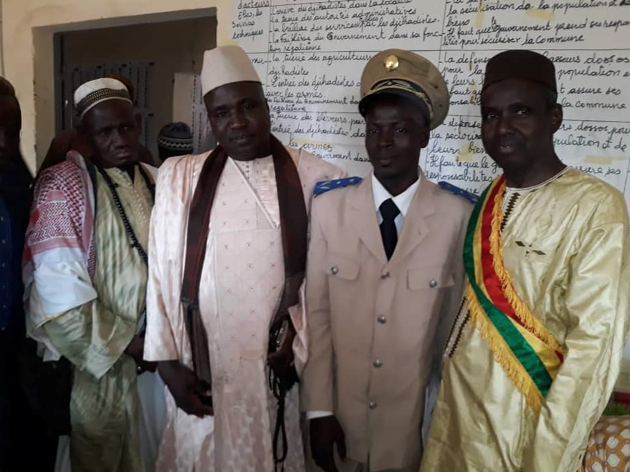
In other parts of central Mali, Koufa’s followers were abducting and executing imams, civil servants and traditional chiefs who they believed were cooperating with the authorities. In response, villages mobilized self-defense groups. In predominantly Bambara areas such as Femaye, many people—including Rimaybé—joined the Donso, a centuries-old guild of hunters who safeguard material and spiritual knowledge of the bush. Although it has a loose national organization, the leadership and motivations of each group tend to be highly local and varied, with some Donso providing real protection for their communities and others using the context of the war to force rivals, often Peul, off coveted land.
In early 2018, around two dozen young men from Femaye attended a meeting of Donso in the nearby commune of Pondori, after which they began fighting alongside neighboring Donso groups. In May, Donso traveling from Femaye to Gagna, a town in neighboring Derary commune, were ambushed by Koufa’s followers. Two Donso from Femaye were killed and the rest retreated.
Believing that the Donso came from the village of Dorobougou, a small fishing settlement in Femaye, the insurgents followed up by threatening to kill anyone from the community who fished in a nearby seasonal lake. Meeting in the nearby village of Perta, Donso responded by calling in reinforcements from neighboring communities and planning an attack on Koumaga, a town with a large Peul community they believed was supporting the insurgents.
The Donso started their attacks in Koumaga in June. They moved compound to compound, killing men and boys and looting homes. Survivors told Human Rights Watch and UN investigators that the assailants had prepared a list of houses to target.[3] Twenty-five civilians were killed and most of the Peul in Koumaga fled.
Until the attack, members of ADIF, the Bamako-based community development organization, had largely stayed out of the escalating conflict back in Femaye. That morning, they awoke to telephone calls and WhatsApp messages from terrified friends and family members. Ousmane Dembele, an engineer who lives in Bamako and comes from a Bambara village in Femaye, remembers a sinking feeling in his stomach, expecting that the attack would lead to more acrimony and reprisals between communities.
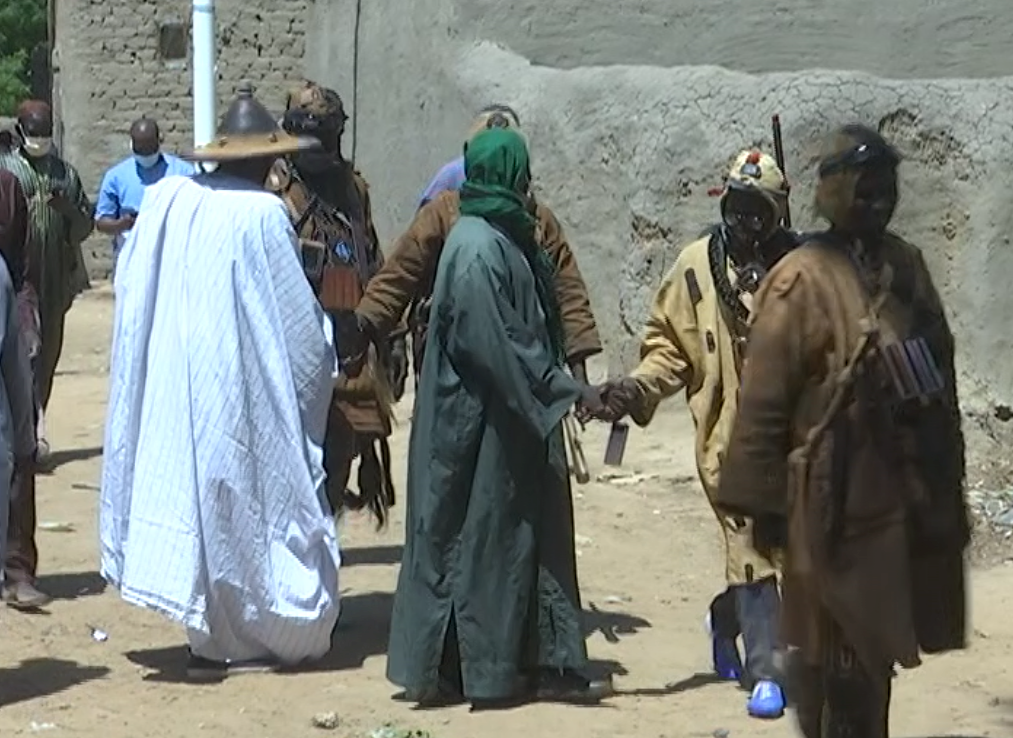
Omar Barry, a Bamako-based merchant, spent the day speaking on the phone with his brother-in-law, who was hiding in the forest outside the village of Dorobougou. On Barry’s advice, he returned to Dorobougou believing that his lack of contact with insurgents meant he would not be harassed. But later in the day more Donso arrived and abducted seven people, including Barry’s brother-in-law. The militia marched the Peul civilians out of the village, executed them and dumped their bodies in a well.
Ahmed, the elderly farmer from Koumaga, was among the thousands of Peul who fled Femaye during the attack. Together with one of his wives and their children, he hurried 10 miles overland to the Bani River, crossing to the town of Sofara in a small boat. They climbed out of the craft with nothing but the clothes on their backs, traumatized by what they had witnessed that morning and unsure if they would ever return.
* * *
After the attacks in Koumaga, the Donso established themselves as the de facto security in Femaye by setting up roadblocks around each village. But jihadist attacks continued, including a roadside bomb blast that killed eight people in late July. In response, the Donso raided another settlement and abducted one of the last remaining Peul civilians from Koumaga. During the surge in intercommunal violence in the cercle de Djenne in 2018, Donso militias were responsible for 90 percent of civilian deaths.[4]
As the violence continued in Femaye, ADIF leaders started to take a more active position. While Barry warned fellow Peul that purchasing weapons to defend themselves would only lead to more violence, Dembele argued with a small but vocal group of Bamabara who wanted to expel the remaining Peul from Femaye. A core group of ADIF leaders began meeting regularly under the leadership of the Peul mayor, whom they decided to keep as president of the group, with the goal of finding a way to bring peace and facilitate the return of the displaced people.
After months of late-night calls, false starts and tense conversations, the ADIF held an intercommunal dialogue in Femaye in March 2019 in collaboration with international peacebuilding NGOs such as the Geneva-based Humanitarian Dialouge. Donso leaders took part, together with representatives of herding and farming associations, and local government figures who remained. They discussed the deeper causes of the conflict from each group’s perspective, which were noted on a large table taped to the wall of the school house where they met. The discussion was followed up a few months later by a larger “Forum for peace and social cohesion” in which the groups came together again to discuss how conflicts over natural resources could be fairly adjudicated on a local level.
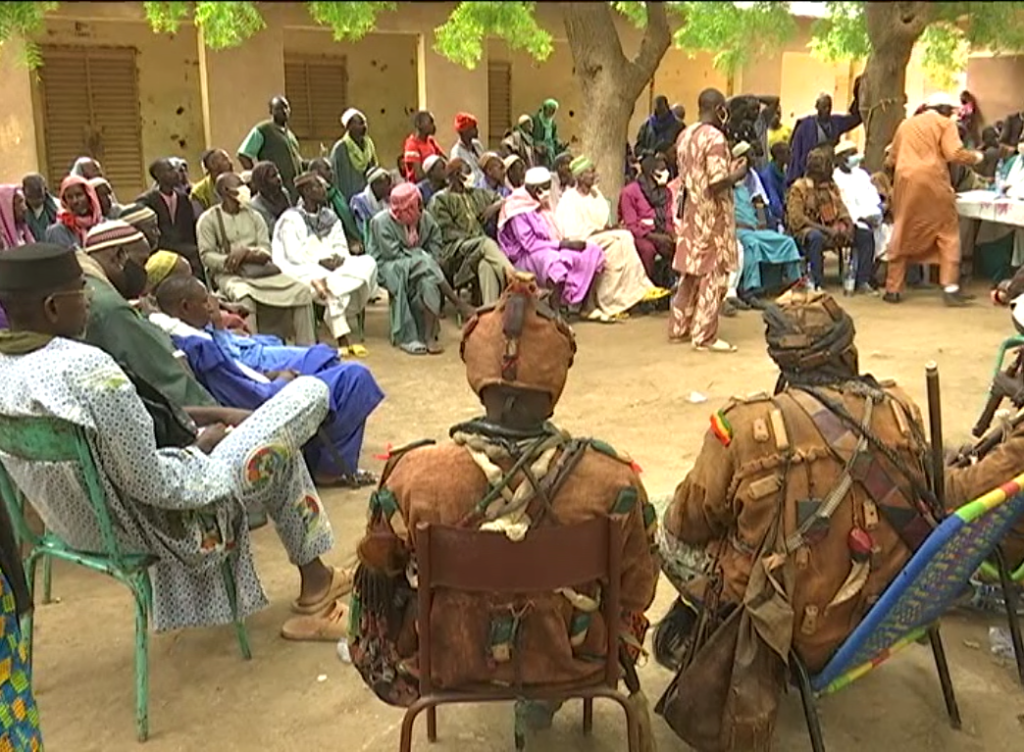
The gathering in Femaye was just one of dozens of highly local dialogues taking place across central Mali at the time. The conversations were facilitated by NGOs such the Swiss HD and Washington-based Search for Common Ground, whose staff were crisscrossing the region at great personal risk, holding meetings to understand community sentiments, share contacts, find neutral areas to meet and provide professional mediation services.
After months of negotiating between representatives of herding and farming associations, local leaders and the Donso, a deal was struck in the cercle de Djenne in August 2019. Amid much fanfare, the parties agreed to avoid using force against civilians, respect farming and herding rights, allow the free movement of people and goods and settle disputes through dialogue.[5] In 2019, according to conflict data collected by Armed Conflict Location Event Database, only two civilians were killed in the cercle de Djenne. Still, a former employee of HD who worked on the Djenne humanitarian deal told me, the lack of participation by the national government and the jihadists—the two main actors in the conflict—meant the accord was not stable.
Following the agreement, to which the Donso of Femaye were party, ADIF began pushing for the return of the over 8,000 Peul internally displaced peoples who had fled in 2018. However, Donso leaders reported that the Bambara in Femaye did not want the Peul to return. Apparently, some Bambara communities had seized neighboring Peul fields when they had fled and were farming the land as their own. ADIF and the Donso proceeded to broker an agreement under which the Bambara communities would be allowed to harvest the crops they had already seeded, after which the fields would be returned to the Peul. Using the recently signed Djenne humanitarian deal as leverage, the Donso informed reticent Bambara communities they had no choice—the Peul would return.
In early 2020, after a year-and-a-half in exile, over a dozen mini-buses paid for by wealthy members of ADIF began ferrying the displaced people from across Mali back to the bumpy dirt paths of Femaye. Video footage captured by Malian television reporters shows armed Donso riding motorcycles ahead of the buses, escorting the returnees. As I watched in Bamako with members of ADIF, one of them paused the clip as a Donso fighter tells community members they need to welcome their neighbors back.
“He had helped plan the attack on Koumaga,” Dembele told me, “and afterward insisted he would never allow Peul to return to Femaye.” When I asked what had changed the Donso man’s mind, he replied “time and talking.” Unsatisfied, I pressed him and other members of ADIF for more details. “We made them see that the Peul were their neighbors, that they had lived together peacefully in the past, and that expelling them would only bring more problems.”
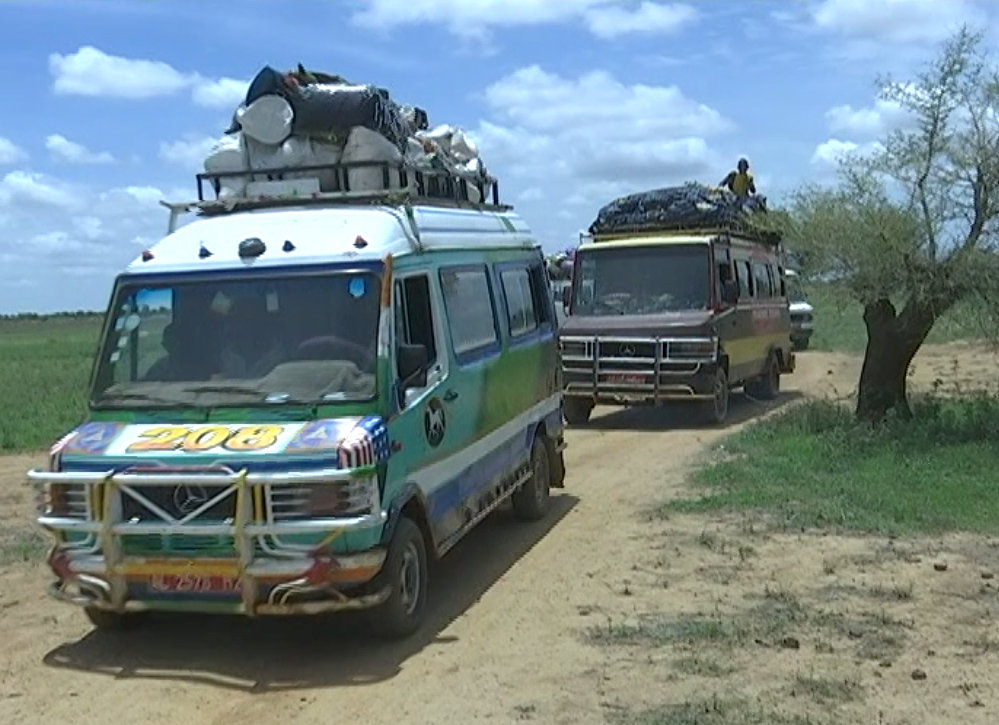
Ahmed Sow and his family, who had been among the first to return to Koumaga in 2020, fell back into the normal rhythm of life. They planted millet at the beginning of the rainy season and harvested it three months later. Tensions and suspicions remained, but misunderstandings were mediated by village chiefs and ADIF leaders. However, outside the small island of Femaye, insurgent attacks followed by collective punishment of Peul communities continued, leading to further jihadist recruitment and eventually the re-engagement of the Donso in fighting in Djenne.
The peace in Femaye was shattered in early 2021, when Donso from the commune marched 10 miles north to Sare Heyre to assist fellow Donso who were under attack from Koufa’s insurgents. As retribution, the insurgents planted roadside bombs outside the villages Donso came from in Femaye. When the rains started, they attacked farmers as they prepared their soil, making it impossible to seed or tend their fields. This time, instead of retaliating by killing Peul civilians, the Donso of Femaye set patrols to guard farmers and fishermen. What followed, in the almost total absence of the Malian military, was a deadly back and forth between Donso militias and the jihadists.
As Koufa’s men tightened their siege of Femaye’s villages, they offered Peul residents safe passage out of the commune if they agreed not to cooperate with the Donso or the government. Most Peul declined. “The [jihadists] did not protect people after Koumaga,” Omar Barry explained. “How could people trust them now?” In response, the insurgents started abducting and assassinating Peul leaders, leading some, including Ahmed and his family, to flee a second time.
The offensive took a heavy toll. Constant attacks on farmers led to one of the lowest harvests in living memory. Roadside bombs prevented people from shopping at local markets. The civilian death toll, mostly at the hands of the insurgents, rose above the levels in 2018 and 2019. Now, hearing about other areas where local residents had sued insurgent groups for peace, some community members decided it might be worthwhile to try to speak with the jihadists.
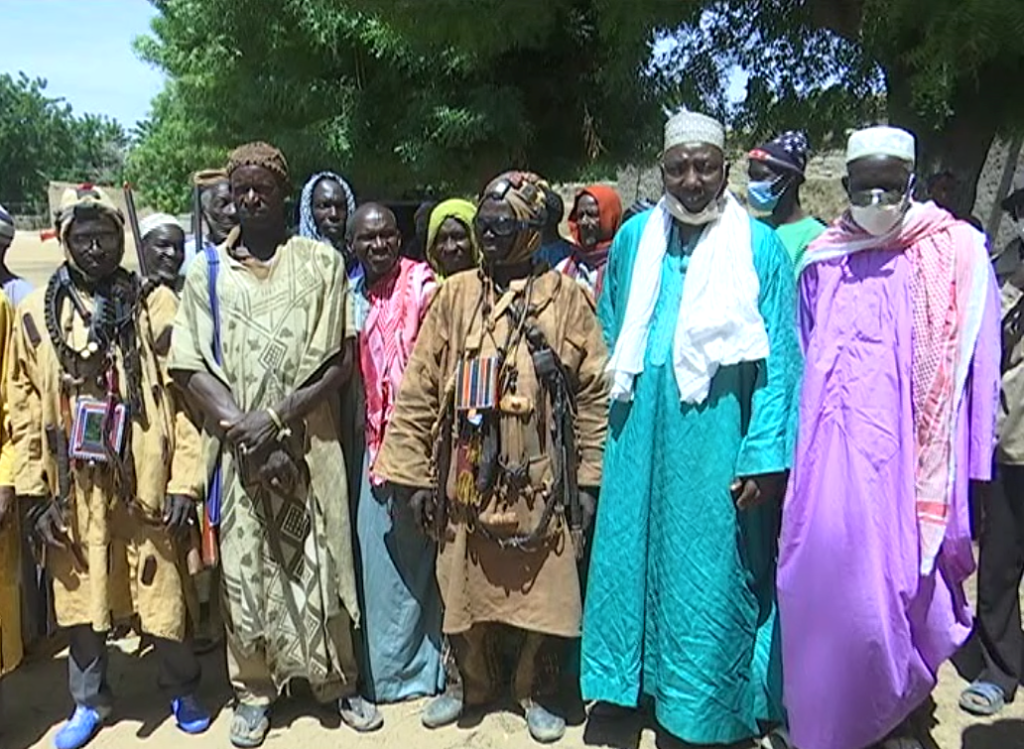
Early this year, Barry made a few calls to young men he knew who had joined Koufa, the insurgent leader, to ask what it would take for the jihadists to lift their siege. They responded with a list of demands they put to other communities in the region: the application of their version of Sharia law, banning women from leaving the village without covering their heads and upper bodies, a prohibition on dancing and music, men growing their beards long and cutting their pants short, the demobilization of the Donso and a promise not to collaborate with the government.
Most Donso leaders initially rejected the demands. Announcements of a new government offensive toward the end of 2021 had raised hopes that the siege would be broken. However, it soon became clear that the military would still be unable to hold territory despite the intervention of Russian mercenaries. As the death toll continued to mount and the village granaries ran low, communities began to wonder whether they would be able to survive another year.
As the 2022 rainy season approached, Donso groups from Femaye signaled they would be amenable to the jihadists’ terms in exchange for a lifting of the siege. Insurgents tend not to sign documents, so instead they sent a list of demands with a phone number for the chiefs to call and concede. Although the Donso leaders were understandably reticent to give up all their weapons and talismans they eventually agreed to hand over the lion’s share. By the end of June, the last community had handed over its weapons and the siege was lifted.
When Ahmed returned home in June 2022, there were no cameras, no signing ceremony and no Donso escort this time. Still, he was happy to be home again, able to seed his fields and feed his family. The insurgents, who stay camped out in patches of forest, visit the village from time to time to ensure their terms are being followed, preach in the mosque and procure rations. When we spoke on the phone, Ahmed’s ire was directed largely at the Malian military, whom he implored to stop killing Peul civilians. He also criticized the government, which he says has been absent for years. “We do not want to live under jihadists,” he said, “but up to now we have no other choice.”
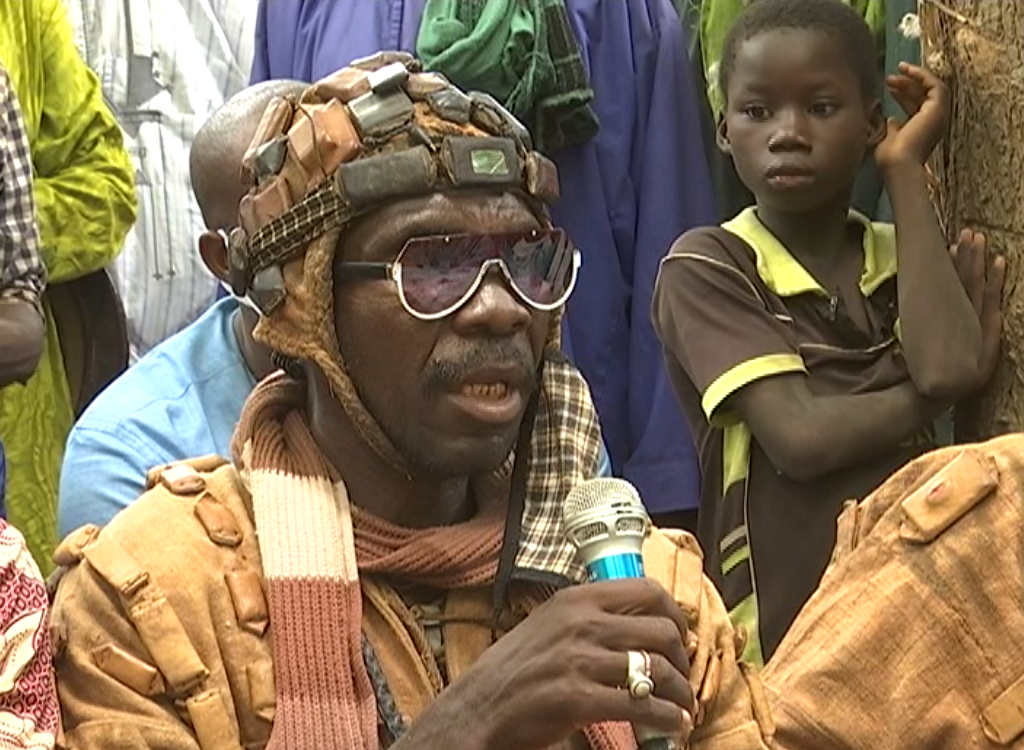
The current situation in Femaye is common in areas of central Mali where the military has no presence. “These local truces are a victory for the insurgents,” Boubacar Ba, one of the foremost experts on the conflict in central Mali, explained to me in his home in Bamako. Beyond simply expanding their territorial control, he said, the jihadists are collecting taxes and directing how local disputes are adjudicated. In many ways the truces that communities are signing simply for their survival represent the first steps for insurgents establishing alternative forms of governance.
It remains unclear how long the current peace in Femaye will last. The national authorities and military have been silent about the dozens of such accords that have been reached. The Malian military has a base just 15 miles downriver in the city of Djenne and could conceivably attack the jihadists in the forests around Femaye. While residents do not want to live under the jihadists’ yoke, they have yet to see evidence that the military can actually hold rural territory after attacking insurgents, and believe any military strike would lead to more Donso mobilization and another descent into violence.
When I asked members of ADIF about their immediate concerns, they spoke about getting the local school running again and procuring basic medications for what remains of the health clinic. “We cannot fight the [insurgents] and we do not know how long they will be there,” Barry told me, ”but we try to make sure people have medicine and education.” Even that would be a tall order to do properly. Since the school’s teachers fled, former university students have taken over the job of teaching, but do not have adequate resources or training. Still, ADIF members are optimistic that the insurgents, who generally do not allow secular schools in territory they control, would allow the school year to continue. “If not,” Barry said, “we will negotiate. We have no guns, no military. All we have is our words.”
Top photo: Donso militia men escort Peul civilians back to Femaye in July 2020
Endnotes
[1] In Mali a “cercle” is the second largest administrative unit between a region and a commune.
[2] Mirjam de Bruijn and Jonna Both (2017) Youth Between State and Rebel (Dis)Orders: Contesting Legitimacy from Below in Sub-Sahara Africa, Small Wars and Insurgencies, 28:4-5, 779-798, DOI: 10.1080/09592318.2017.1322329 and Thurston, Alexander. “Central Mali: The Possibilities and Limits of Incorporation.” Essay. In Jihadists of North Africa and the Sahel: Local Politics and Rebel Groups, 147–91. Cambridge, United Kingdom: Cambridge University Press, 2020.
[3] See Dufka, Corinne. “‘We Used to Be Brothers’: Self-Defense Group Abuses in Central Mali.” Human Rights
Watch, December 2018 and Rapport Sur Les Abus Des Droits De L’homme Commis Dans Le Village De Koumaga,
Cercle De Djenne, Region De Mopti 23-25 Juin 2018. MINUSMA, December 2018.
https://minusma.unmissions.org/sites/default/files/mali_-_rapport_-_incident_de_koumaga_-_.pdf.
[4] According to ACLED data, 105 civilians were killed in Djenne cercle in 2018, 88 by the Donso, 16 by insurgents and one by the military.
[5] See the following for an English translation of the accord: https://www.peaceagreements.org/viewmasterdocument/2237

